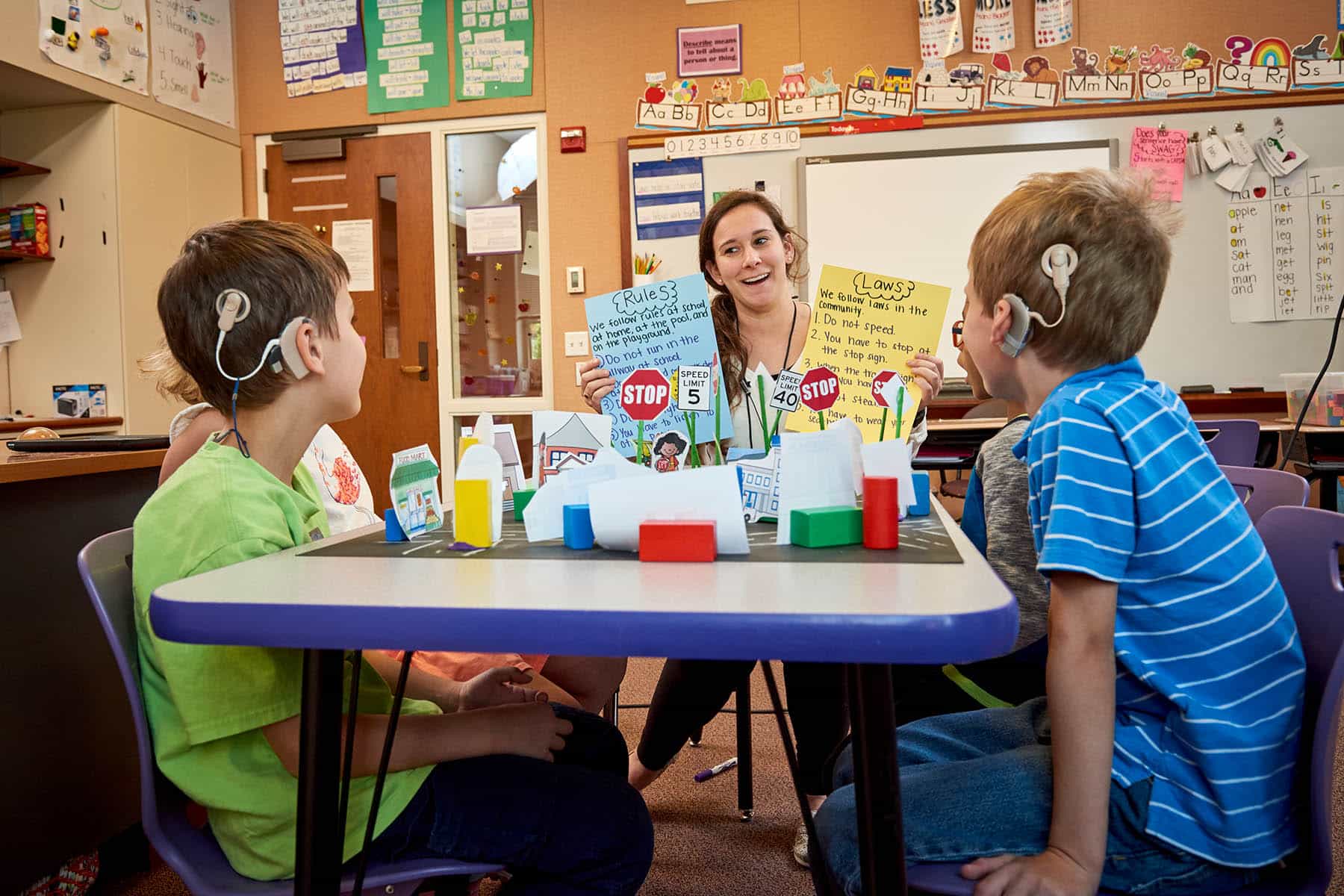If you are looking for fun, no-fail language activities, you’ve come to the right place. These five activities can be used to practice vocabulary and elicit a variety of language structures for students with hearing loss at any age.
1) Experience stories
Take pictures during a nature walk, field trip or science experiment. Use the pictures to make a book and have the child dictate the language used in the experience. Children love to see themselves and their friends in the pictures and will want to share the book with others, getting multiple opportunities to practice the target language structures and vocabulary. Check out this blog post for how to make an experience story.’
2) Role plays
Use role plays to retell stories using targeted language. Choose simple books with characters that have dialogue with other characters. Good ones for younger kids are The Three Billy Goats Gruff, The Little Red Hen and Goldilocks and the Three Bears. Add some props to make the activity more fun! Older kids may like books from the Frog and Toad series or chapters from Pippi Longstocking and Charlotte’s Web.
3) Games
Teacher- and commercial-made games are a great way to practice syntax and pragmatic language. Practice turn-taking, asking and answering questions, vocabulary and more with games such as Candyland and Memory. Adapt a commercial-made game by replacing the cards with your targeted language. To review question forms and vocabulary using Candyland with older students, have each student roll a die and answer a question written on a card (e.g., have a student ask Jane if she knows the definition of a gas and what it is). If the student answers correctly, she can move that amount of spaces on the board.
4) Pretend Experiences
Setting up experiences for students to pretend can help with listening and language when the actual experience occurs. Create a restaurant and practice ordering from the menu, role playing each part (e.g., server, customer, chef). With older students, practice ordering pizza. You’ll give students the opportunity to practice vocabulary, syntax and pragmatic language while listening in a quieter setting. The real fun can happen if you make the pretend experience a real one.
5) Art
Cutting, gluing, painting and drawing can be taken up a notch when you use it as a language activity. Have children ask each other for their art materials and say what they will do with it. By the end, they will have a beautiful art project while practicing vocabulary and language along the way.
Whether you teach younger or older kids with hearing loss or they use simple or complex language, these fun and easy activities will guarantee successful language lessons.
Looking for more ideas to use in the classroom? Try some science experiments for preschoolers. And if you’re new to teaching students with hearing loss, you can learn more about ways to support them by watching one of our free online courses.

Jennifer Manley was a teacher of the deaf and associate coordinator of the Emerson Center for Professional Development at Central Institute for the Deaf- CID. Ms. Manley is co-author of the CID SPICE for Life auditory learning curriculum and author of the 2nd Edition CID SPICE auditory training curriculum.












